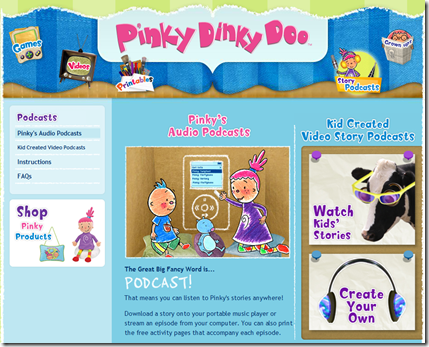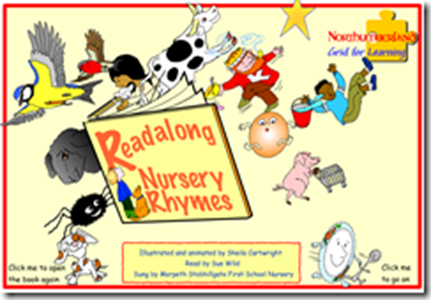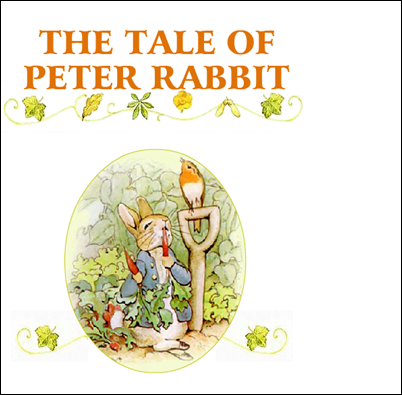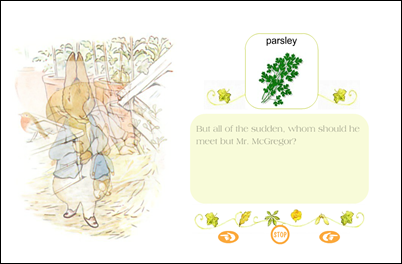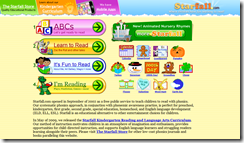There are times when I need to send out the same emails to a whole lot of people, and after trying one method after another I decided it was time to teach myself Mail Merge. I took screenshots of my journey which I will now share with you in case you want to do something similar. What a timesaver it has proved to be! Now why didn't I think of this a whole lot earlier!
Monday, January 30, 2012
Monday, January 23, 2012
Create a blogging culture in your English classroom
Recently I created a Slideshare called ‘Your blog can be a fantastic teaching tool’ and I wrote from the standpoint of the teacher using a blog to teach. I posted this in an earlier blog post. Here it is just as a reminder.
Today’s post examines how a blog can be very beneficial to the students in a classroom, and in this case, an English classroom.
Create a blog for yourself and for your students
One of the best ways to start transforming your classroom is to first create your own blog and then let the students create theirs. Link their blogs to yours by using a blog roll. Look at the example from Mrs Albanese's class. Here is the perfect example of the students blogs listed down the side. This is very important because often you want the students to comment on each other’s postings and this way is easy because they simply visit your blog and easily find the rest of the students' blogs.
http://mrsalbanese.edublogs.org
Which blogging platform?
Naturally you want to use platform that is safe, economical, spacious and attractive.There are many options but I will just mention four.
Edublogs
Now that Edublogs no longer has advertising on it it is a much better proposition to use. Edublogs provides a very small amount of storage space, so I pay for extra space yearly. You can then create student blogs yourself using something called the gmail hack, so that you have access to passwords. (The Edublogger is a great site with plenty of tips and tricks on how to do things like that) The only problem is that Edublogs doesn’t allow much space on their free blogs for the learners. But it would probably do for a year of work.
http://bellbulldogreaders.edublogs.org/
BloggerI particularly love using Blogger for myself because it gives loads of free space and has a nice feel and touch. The templates are also very attractive. However, it is often felt to be unsuitable for students because of “the next blog” icon at the top.
http://mediaspecialistsguide.blogspot.com/
http://mediaspecialistsguide.blogspot.com/
PosterousSome people rave about using Posterous blogs for collaborative projects. The reason for this is that you can send an email from anywhere to your posterous blog. It then becomes a draft ready for you to edit and publish. To get details for this look at: http://www.howtogeek.com/howto/28413/blog-from-anywhere-instantly-with-posterous/ (I have since discovered that you can also post to your blog using Blogger.) Here is an example of a posterous blog used for a global collaborative project.
http://kstadler.posterous.com/
http://kstadler.posterous.com/
KidblogsThere has been a lot of talk about Kidblogs being a safe and simple platform. The Kidblog ‘About page’ says “Kidblog allows teachers to monitor and control all publishing activity within the classroom blogging community.” I haven’t personally used Kidblog, but it is supposedly really easy for creating a class blog and blogs for your students. Here is a post that tells more about the pros and cons of using Kidblog: http://blogallaboutit.edublogs.org/2010/04/23/kidblog-an-easier-alternative-to-blogging-with-elementary-students/
Here is an example of a kidlog
http://kidblog.org/MrsKolbertsClass2011
http://kidblog.org/MrsKolbertsClass2011
Well, whatever platform you use, just do it!
A blog can benefit any class...any subject. But today I am going to focus on English. I was quite inspired by a post I read recently on an English Teacher's blog (http://shelleywright.wordpress.com/2011/12/13/life-in-an-inquiry-driven-technology-embedded-connected-classroom-english/) - and this caused me to think about writing this post.
Well, I am sure you have plenty of ideas of what you can do with a blog in an English class. I will add ideas to these further along in this post. It is certainly a fantastic way to get your students writing. To start off take a look at Mr Miller’s blog and see how he uses his blog for his English lessons. I like the way he also has a wiki to support the blog. In my thinking the two go together…
http://millersenglish10.blogspot.com
Notice how the teachers in these blogs give regular detailed instructions to their students.http://student.sheboyganfalls.k12.wi.us/kajohnson/ (her Grade 9 class)
http://msjohnson12.anewecology.com/ (Her Grade 12 class)
http://hoodsenglish.blogspot.com/
http://msjohnson12.anewecology.com/ (Her Grade 12 class)
http://hoodsenglish.blogspot.com/
This teacher directs her students to using web tools.
http://thelamppost.ca/
http://thelamppost.ca/
What activities can you do on a blog in an English class?
As you know English has four main strands – reading, writing, language and listening and speaking. These can be beautifully incorporated into blogging.
1. Let your learners answer questions and respond to prompts online. You could set a question on your blog and the learners can answer the question in your comment box. Notice how The Hawks Talk does this. http://stgeorgesenglish.com They can then extend the conversation by answering your next question or prompt and then post comments on each others blogs.
2. For literature lessons, invite an author to post on your blog and let the learners comment on this post. This is a great way to have book discussions online. You could even try and organise a Skype interview with the author and let the slearners summarise this afterwards. There must be plenty of examples of Skype chats with authors, but here is a post about one with Scientist.
http://techblog.stcyprians.net/index/skype-chats-with-scientists-by-ms-n-wallace
3. The learners identify and discuss the major points of a book, article, speech etc.
http://lhsblog.edublogs.org/
5. Let the learners post reviews of movies, books, concerts, games etc regularly.
6. Use a blog to archive daily class notes. You (or someone in the class) could post summaries on to your class blog. This will be helpful to students who may be absent.
7. For listening and speaking activities learners could use a MP3 player, read into it and then post it on the blog. They could concentrate on voice modulation, inflection, and tempo. The learners could then listen to each others’ speaking activities. You can virtually put anything on a blog. There’s a programme called embedit.in which gives anything the necessary HTML code which is necessary if you wish to include it on a blog or wiki
8. The learners could make presentations on different things and then embed their presentations on webpages. My Slideshare above mentions how useful Box.net is for this.
9. They could learn about language conventions and then practise using the example on your blog. You could post weekly exercises for them to do. The following is an old blog but it gives some ideas like this.
http://hargraves12.wordpress.com
You could take this further and ask them to make podcasts and even slideshows of difficult conventions.
You could take this further and ask them to make podcasts and even slideshows of difficult conventions.
10. As they read a novel prescribe blog prompts for them to respond to.
11. They could paraphrase sections that you post on the blog.
12. You could teach the learners the structure of workplace documents and let them analyse them in terms of heading, font, pictures and readability etc. They could make suggestions on how to improve them.
13. When starting a new theme create a “KWL chart” on your blog. Have students blog about what they know, what they want to know, and eventually what they have learned. Students will be able to see other posts and scaffold their learning off the responses of others. As the educator, you can quickly assess, focus, and possibly redirect your unit to meet the specific needs of your students.http://teachinghistory.org/system/files/KWL+Chart+with+Knowledge+Questions.pdf
14. You could link documents to a folder in Box.net (also a free programme). Notice how Mrs Lesniak does this. http://lesniakenglish.blogspot.com/
15. On your blog you could communicate with parents about classroom news, policies and events. You could publish commendable student work, writing, photos, video etc.
http://bgenglish.blogspot.com/
16. You could use your blog as a place to reflect as well.
http://jimburke.typepad.com/
http://mtnbrookseniors.blogspot.com/
17. Your blog could be a blog of ideas for English teaching.
http://catlintucker.com/
18. The learners can write journal entries, essays and poems in their blogs. They could also write book reviews
http://josephr4.edublogs.org/2010/07/19/my-report
http://josephr4.edublogs.org/2010/07/19/my-report
Further down in the same blog – he relates his book review.
Here are another two posts that give a lot of ideas about book reviews.
http://mrschureads.blogspot.com/ http://theapple.monster.com/benefits/articles/8529-10-technology-enhanced-alternatives-to-book-reports
19. Illustrate to the students how they can use technology on their blogs. You can do this by using screencasts on your blog or just be blog posts.
http://shelleywright.wordpress.com/
http://shelleywright.wordpress.com/
20. Post homework in your blog. http://student.sheboyganfalls.k12.wi.us/aeharter/
21. I love the way this teacher posts lesson ideas in his English blog
http://tefltecher.wordpress.com/
http://tefltecher.wordpress.com/
22. One teacher I know of got her class to write a novel on a blog. This was eventually published.
http://5bwrites.blogspot.com/
http://5bwrites.blogspot.com/
23. They could create book trailers for their blogs.
http://www.booktrailersforreaders.com/Home+Student+Book+Trailers
http://www.booktrailersforreaders.com/Home+Student+Book+Trailers
Literature blogs
http://www.thebookchook.com/
http://www.zencollegelife.com/50-best-childrens-literature-blogs/
http://www.webenglishteacher.com/litcircles.html
http://teachwithpicturebooks.blogspot.com/
http://msdegenhardt.com/ (I like this teacher’s collage of books in her header)
http://www.thebookchook.com/
http://www.zencollegelife.com/50-best-childrens-literature-blogs/
http://www.webenglishteacher.com/litcircles.html
http://teachwithpicturebooks.blogspot.com/
http://msdegenhardt.com/ (I like this teacher’s collage of books in her header)
24. Don’t forget about using a fake facebook page (template in Google Docs) which could be then embeeded into the blog. This teacher created a fantastic template last year in Google docs that he is willing to share.
http://www.teachthecloud.com/2011/02/historical-facebook-tutorial.html
http://www.teachthecloud.com/2011/02/historical-facebook-tutorial.html
Other useful links
http://supportblogging.com/Links+to+School+Bloggers
http://student.sheboyganfalls.k12.wi.us/dehogue/
http://englishwithlaura2.blogspot.com/
http://englishwithlaura4.blogspot.com/
http://englishteachinglab.blogspot.com/
http://www.huffenglish.com/
A great source of ideas for English teachers
And to end off this post here is a fantastic Ning for English teachers which will undoubtedly have plenty of resources and ideas.
http://englishcompanion.ning.com/
Sunday, January 15, 2012
Look at this interactive heart!
The internet is full of amazing animations and infographics that can really aid our visual learners. I love this explanation of how the heart works which is found at http://www.explania.com/en/channels/health/detail/the-human-heart
Explore the embedded infographic below
Explore the embedded infographic below
The Human Heart - Explania
Classroom application
This could be a very useful supplement resource for a Life Sciences teacher. More examples of animations and videos can be found at:
- The Medical animation library: http://www.pennmedicine.org/health_info/animationplayer/
- Interactive Biology: http://www.interactive-biology.com/
- Interactive Biology on YouTube: http://www.youtube.com/user/InteractiveBiology
Friday, January 13, 2012
12 more places to find reading material for Foundation Phase learners
The Internet is a goldmine for reading materials. Earlier this week I wrote a post highlighting 12 websites that provide great reading material for young learners. (http://schoolnetsa.blogspot.com/2012/01/bring-technology-into-your-foundation.html). These sites could be very useful to link to with the new CAPS curriculum being implemented in South Africa for Grades 1 – 3 this year since there is a big emphasis on reading.
In this post I list ANOTHER 12 sites that can be used to encourage reading in our young learners.
1. Pinky Dinky Doo podcasts
http://www.pinkydinkydoo.com/podcasts.html
This site is presented by Sesameworkshop. It consists of downloadable podcasts.
2. Nursery rhymes
http://ngfl.northumberland.gov.uk/Foundation/nurseryrhymes/rhymes_set1.swf
3. Free kids books
http://freekidsbooks.org/
Here you will find loads and loads of PDFs to download.
4. Storytime for Me
http://storytimeforme.com/series
This site has plenty of free online stories anda large selection of talking kids stories. The only problem is that the site is overloaded with adverts, so watch where you click.
5. Mighty Books
http://www.mightybook.com/
This site provides plenty of animated storybooks and songs.
6. Steve Barracks Best Children’s Books
http://www.best-childrens-books.com/free-childrens-books.html
There is plenty of reading material available at this site.
.
7. Little Squirts Books for free
http://www.kidsbooksfree.com/
These are books written and illustrated by Mark Griffin
8. Storynory books
http://storynory.com/
These are free audio stories for kids.
9. The International Children’s Digital Library
http://en.childrenslibrary.org/
The ICDL Foundation's goal is to build a collection of books that represents outstanding historical and contemporary books from throughout the world.
10. Kids’ English Books.com
http://www.kidsenglishbooks.com/
This is a collection of free printable books with matching audio.
11. Light up your brain
http://lightupyourbrain.com/stories/
This is a selection of free audio stories for children.
12. We Read for Kids
http://www.weread.org/kids/index.php
Many of the links above are mentioned on this site. It is an incredible site that not only gives links to a number of places where you can find free children's books, but also also provides a multitude of good reading tips for teaching reading to children…plus all sorts of information about reading.
Application for the classroom
This last site in particular is worth dipping into. It gives some great tips for reading sessions and also had a page of reading games that one can play to stimulate an interest in words.Tuesday, January 10, 2012
Get ready for World Maths Day!
This is a guest post written by Lisa G who is an ITC teacher in Cape Town. Lisa was a Microsoft Innovative finalist in South Africa in 2011 and she keeps an interesting ITC blog http://icteducator.blogspot.com/. I saw this post on her blog this week and asked her if I could use it as a guest post. Last year I wanted to participate in World Maths Day but didn’t get registered in time. So, don’t be like me…prepare well in advance. You’ll need to start now!
World Maths Day is coming up on 7 March 2012. Have you considered participating?
As a school we have taken part and it was a great experience for everyone. Its really simple. All you need to do is get permission from parents, register the children, and then follow the instructions that are very clearly laid out on their website.
It looks from the Pre-registration that one now signs up for World Spelling/Maths/Science Day. Even better!
I registered the children who wanted to take part, and then each day from the time that "practice" begins, they can come in and get used to how the whole event works. I do this so that it is not a surprise when they get to the timed event - they are confident and ready for action! What I also enjoy about this, is that they can log on at home and continue to practice or compete after school in their own time.
The best was listening to their excited shrieks of "I'm playing against Japan!" or "I am playing against India!" or "I am playing against someone in Australia!" Suddenly the world was bigger than our ICT Lab and we embraced every moment of it! We got a report back on how each child did and how we achieved as a school.
I am really looking forward to registering our learners for these events again this year. Why don't you?
Wishing all a wonderfully educational 2012!
Bring technology into your Foundation Phase Reading lessons
Here in South Africa the 2012 year has started and the Foundation Phase (Grades R-3) has started implementing the new CAPS curriculum. I thought this would be a great opportunity to draw your attention to 12 websites that have great reading material for your young learners.
1. Storyline Onlinehttp://www.storylineonline.net/
This site is presented by the Screen Actors Guild Foundation. This is an online video programme with their members reading stories aloud. Each story has some activity suggestions plus a further Activity Guide download with some superb activities and ideas on it.
This is Beatrix Potter’s famous tale beautifully retold using the original drawings and showing the words so that the learners can read along.
3. Speakabooshttp://www.speakaboos.com/stories
4. Riffs Reading Planethttp://www.rif.org/kids/readingplanet/bookzone/read_aloud_stories.htm

5. Topmarkshttp://topmarks.co.uk/EducationalGames.aspx?cat=37
6. Meegenius e-books for kidshttp://www.meegenius.com/store/books/free/
7. AOL Kidshttp://kids.aol.com/KOL/2/koljrstories/archive/animal-stories
8. PBS Kidshttp://pbskids.org/lions/stories/
9. Read to mehttp://www.readtomelv.com/current-books/
10. National Geographic Young Explorerhttp://www.nationalgeographic.com/ngyoungexplorer/moreissues.html
11. Starfallhttp://www.starfall.com/
12. Short storieshttp://www.eastoftheweb.com/short-stories/childrenindex.html
Classroom applicationPerhaps you don’t have the facilities to make use of these in your classroom – but have you ever considered creating a classroom blog? You could then list these websites on the blog so that parents can make use of them at home.
Friday, January 6, 2012
A fantastic way of integrating technology into your Social Sciences curriculum
Recently I have taken interest in integration the curriculum with Social Sciences so I started doing a websearch. Its amazing what treasures you come across when you do that. After looking through and bookmarking an enormous amount of sites including the Edublogs 2011 winner sites, I came across a social studies Ning site that had won one of the Edublogs awards.
http://sschat.ning.com/

After looking around the Ning I came across a family, the van Soyes, who will be taking a 400-day around-the-world journey to raise geo-literacy in K-12 students. They will be publishing emails, photos and video from 50 counties and 6 continents. Wow, they already have an enormous collection of amazing stuff from just preparing for their travels and they have documented it so well. I thought I would record some of it here as it gives great ideas for the classroom.
Embed PDFs into blogs or wikis
Here is a sample from where they plan to be in February. They have created their documents colourfully in a word processor it seems, and have then converted them to PDFs. They then embedded them into their website.
http://www.trekkingtheplanet.net/docs/W02_Hawaii_Education_Module.pdf

Actually it looks as though they have been very busy with their planning as they have already done all their research and documented it ready for when they actually get there.

Classroom idea
This gives me the idea of getting the learners to study a country using a programme like Microsoft Word to record the details details. They then turn it into a PDF and place it on a blog or wiki.
Make use of podcasts
The van Soyes have a beautiful website for recording their travels with podcasts, webcasts etc. This will be a good website to keep in mind. They would also like to visit schools along the way. I have just checked and they won’t be visiting South Africa unfortunately or we could have arranged for them to visit a school or two!
http://www.trekkingtheplanet.net/

Classroom idea
This gives me the idea that using audio podcasts and getting the learners to make short videos about various aspects of a trip can add great interest to classroom work.
Make use of webcasts
I see on their website that they made a webcast giving background to their intended journey. You can view it here:
http://www.spreecast.com/events/trekkingplanet

Classroom ideaThis gives me the idea of using a programme such as Spreecast for webcasts, (http://www.spreecast.com) I have just taken a look at it, and it is a social video platform that allows people to broadcast together. It says:
Up to 4 people on camera at once.
*Unlimited number of people can view (can also be private).
*Recorded live and immediately available for playback.
*Viewers: Chat, ask questions, join in on camera!
*Creators: You control who goes on camera and when.
Well, this is a project I for one will take a great interest in next year. Why not join me?
Subscribe to:
Posts (Atom)




















